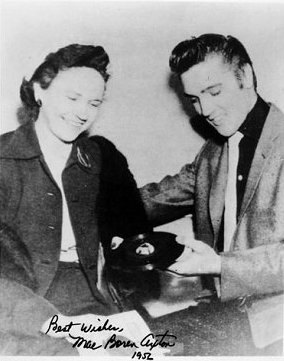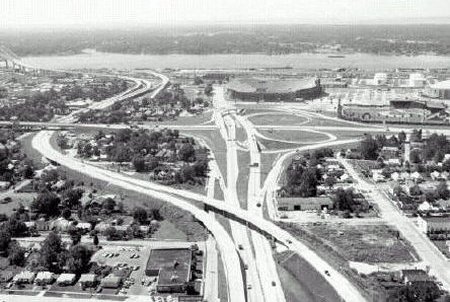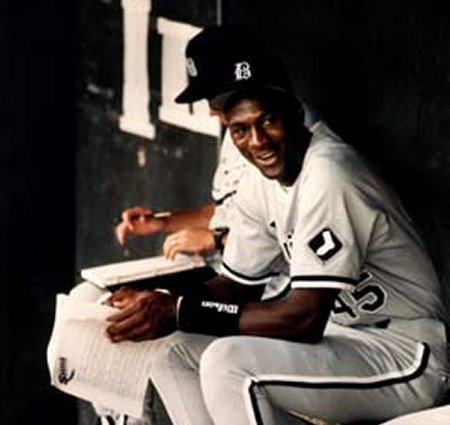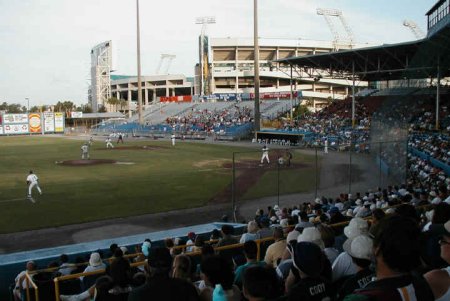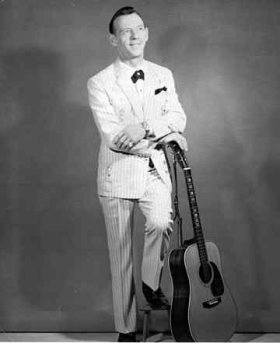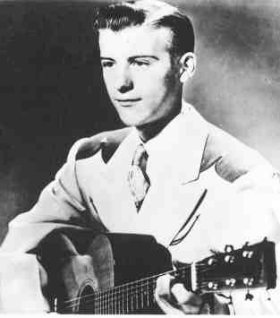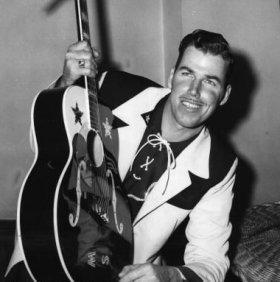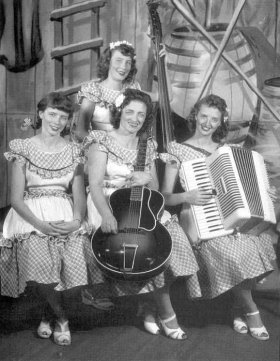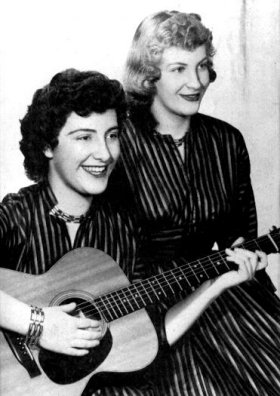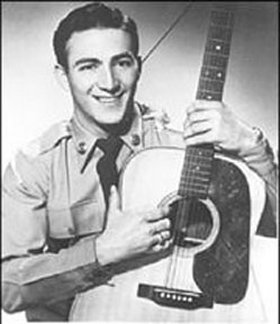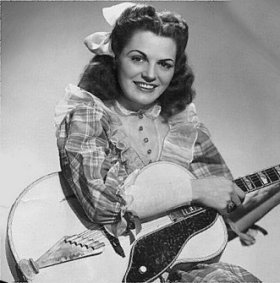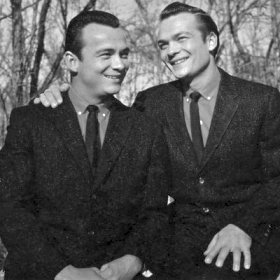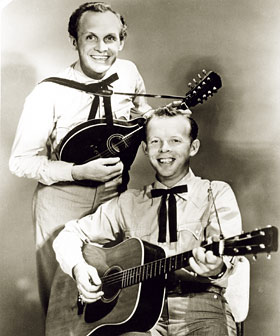 |
Wolfson Park - Jacksonville, FL
On March 16, 1955 Jacksonville's newest baseball park opened at Duval and Franklin streets replacing Durkee field as the Municipal ballpark. It was built at a cost of $400,000 through the efforts of Mayor Haydon Burns and along with civic leader and businessman Sam W. Wolfson who had purchased the Jacksonville Tars prior to the 1953 season. Wolfson renamed the team the Braves.1 The new park had an 8200 seat capacity and featured a spacious lower concourse leading to a seating bowl with blue box seats below the walkway, two or three rows of blue reserved seats above it, and then red seats and benches that were general admission. The whole grandstand, including the lower boxes, was covered by a roof.
The park was located just down the street from the Gator Bowl*, a 70,000 seat football stadium built in 1948 and home to the Jacksonville Jaguars. When the park opened it was considered one of the best Double A ballparks in the South Atlantic League and a real showcase. It played host to many major league teams playing exhibition games on their way home after spring training in Florida. Since the Coliseum would not be built until 1961 the park attracted major talent in and out of baseball.1
"Hank Snow's All Star Jamboree" was booked to play there for the first time on May 12th and 13th in 1955 that featured country acts Faron Young, the Wilburn Brothers and Mother Maybelle Carter and the Carter sisters. Other artists appearing on the Jamboree were Jimmy Rodgers Snow (Hanks son), Slim Whitman, The Davis sisters, Martha Carson and Elvis, Scotty and Bill who had only recently began touring with them.
Hank Snow was the one that introduced Elvis at the Grand Ole Opry in October of 1954 and was managed by Colonel Parker at the time. In February of 1955, Bob Neal who had recently taken over management duties of the band from Scotty arranged to have them perform with the Jamboree and have Hank and the Colonel help with the booking. His son, Jimmy Rodgers Snow, named for Hank's hero Jimmie Rodgers, remembers working with Elvis and the band in Lubbock, Texas earlier in the year and said, "I carried the letter of intent to him to sign up with the company that dad and Parker owned. It was called Jamboree attractions. I was a member, and was booked by Parker along with several others."
Jimmy Rodgers Snow said the stage was setup in the middle of the field facing the bleaches with rows of chairs in front of the stage. He said the girls in the chairs in the front are the ones that pursued him. When asked if it happened on more than one occasion, he said, "Yes, just about everywhere we played it happened. Sometimes it would be more people then other times. It would depend on how large the crowd was. I know that Elvis did not invite the girls back stage anymore. I think he learned that it was not a good idea."
This was the point that according to the Colonel's advance man, Oscar Davis, Parker was irrevocably sold on the growth potential of Elvis Presley. Scotty, in his book "That's Alright Elvis" recalled that almost from the beginning the Colonel started trying to separate Elvis from the band. He had tried to get Hank's band to back him and both they and Elvis refused to do that. He felt that it was because he "had Elvis' ear". The following July when they performed at the ballpark again appearing with Andy Griffith, Ferlin Husky and Marty Robbins, the fans (girls) apparently rioted and again relieved Elvis of most of his clothing. A fan, Ardys (Bell) Clawson who had recently moved to Jacksonville from Boca Grande was in attendance both days and after the performance on the 28th saw him hiding shirtless eating ice out of one of the drink boxes under the grandstand. Her brother took pictures.
In 1958 Sam Wolfson sold the Jacksonville Braves to Bill Terry, an automobile dealer and former National League batting champion. Wolfson then served as the South Atlantic League president for one year and later became president of the Jacksonville Braves in 1962, the first year the team was known as the Suns and had joined the Triple-A International League. Shortly after his death in 1963, the ballpark was renamed Wolfson Park.1
In its day the park played host to many famous players. Soon after opening, an exhibition between the Brooklyn Dodgers and Milwaukee Braves featured nine future Hall-of-Famers. Six of them -- Hank Aaron, Eddie Mathews, Roy Campanella, Jackie Robinson, Duke Snider and Pee Wee Reese -- played that day. Two pitchers, the Braves' Warren Spahn and Dodgers reliever Tommy Lasorda, never got in the game and another, Walter Alston, was the Dodgers' manager. Randy Johnson, Andres Galaragga, Alex Rodriguez, Tommie Aaron, Luis Tiant, Tug McGraw, Dan Quisenberry and announcer Bob Uecker to name a few all made Wolfson Park their temporary home. Michael Jordan, who temporarily left the NBA Chicago Bulls to pursue a short-lived pro baseball career played three games there against the Suns with the Birmingham Barons.1
After 47 years the park finally had to give way to football. It had become obsolete and rather than renovate it was torn down in 2003 to make a parking lot for AllTel Stadium next door which had replaced the Gator Bowl. That same year Wolfson Park was replaced by a $34 million state-of-the-art facility only two blocks away. page added November 11, 2007 1 adapted from an article by Gene Frenette Florida*a general misconception is that Elvis, Scotty and Bill performed at the the Gator Bowl, this is probably due in part to its proximity to Wolfson Park. Their only appearances in Jacksonville were at Wolfson park and lastly at the Florida Theater. Elvis would later perform several dates at the Coliseum with the TCB band. Special thanks and credit goes again to the FECC Forum for their inspiration and contributions to this page. Just some of the Hank Snow Jamboree performers that Elvis, Scotty and Bill toured with.
|
||||
|
All photos on this site (that we didn't borrow) unless otherwise indicated are the property of either Scotty Moore or James V. Roy and unauthorized use or reproduction is prohibited. |
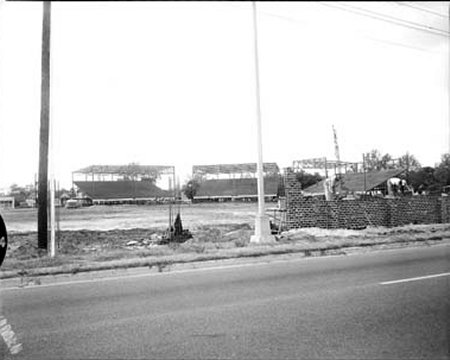
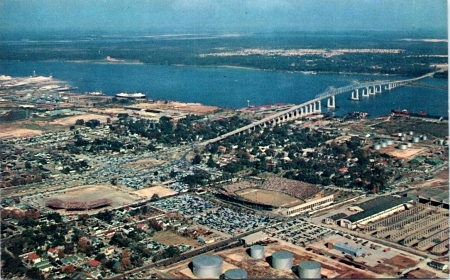

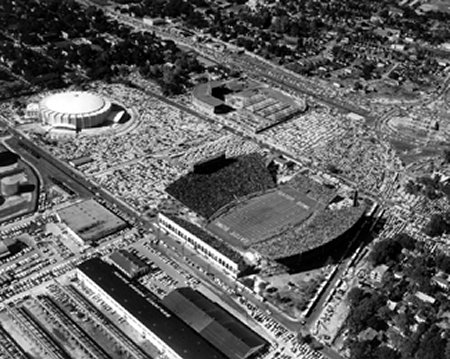
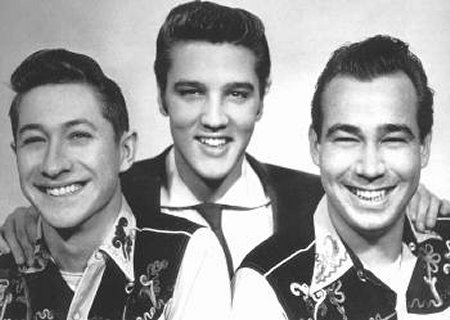
 Mae Boren Axton, a Jacksonville school teacher who had done promotional
work for the Colonel in the past was hired as a publicist for several of
the Jamboree tour dates. Almost from the start of the touring days with the
Jamboree the
demand for Elvis by the kids (mostly women) over the other performers
was almost overwhelming. On May 13, at the ballpark at the
conclusion of his performance Elvis joked with the girls in the audience
"Girls, I'll see you backstage." Peter Guralnick in
Mae Boren Axton, a Jacksonville school teacher who had done promotional
work for the Colonel in the past was hired as a publicist for several of
the Jamboree tour dates. Almost from the start of the touring days with the
Jamboree the
demand for Elvis by the kids (mostly women) over the other performers
was almost overwhelming. On May 13, at the ballpark at the
conclusion of his performance Elvis joked with the girls in the audience
"Girls, I'll see you backstage." Peter Guralnick in
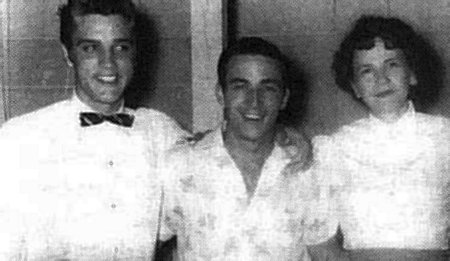

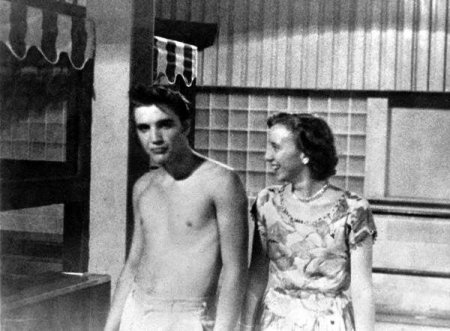
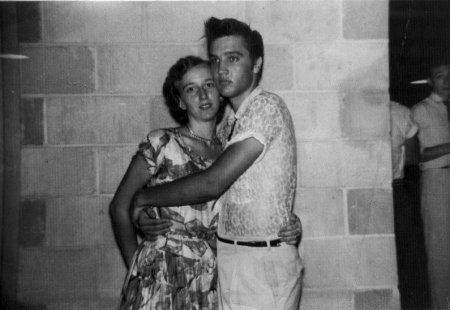
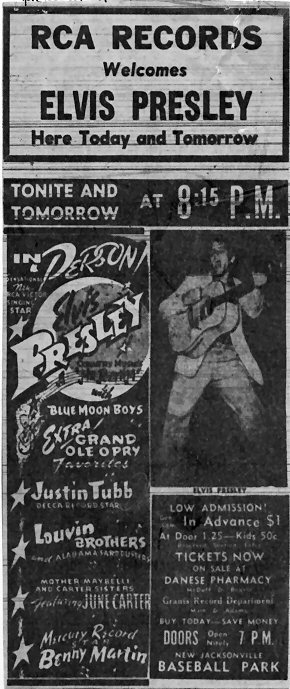 Mae Boren Axton, along with Thomas Durden wrote Heartbreak Hotel in 1955
after reading about a suicide in the paper where a well-dressed man had
removed all labels from his clothing, destroyed his identity papers and
left a note saying: "I walk a lonely street."
The next time the band performed at the ballpark, this time with DJ on
drums, was in February of 1956.
Elvis was now signed with RCA, had made a couple of Television
appearances and his recording of Heartbreak Hotel was #1 on the
charts. This time he was the featured performer and performed
shows on the 23rd and 24th that again included the Carter Sisters and the Louvin
Brothers. After his performance on the 23rd he collapsed in
the parking lot, was admitted to a hospital and advised to rest.
He didn't and on the following night made his final appearance at the
ballpark.
Mae Boren Axton, along with Thomas Durden wrote Heartbreak Hotel in 1955
after reading about a suicide in the paper where a well-dressed man had
removed all labels from his clothing, destroyed his identity papers and
left a note saying: "I walk a lonely street."
The next time the band performed at the ballpark, this time with DJ on
drums, was in February of 1956.
Elvis was now signed with RCA, had made a couple of Television
appearances and his recording of Heartbreak Hotel was #1 on the
charts. This time he was the featured performer and performed
shows on the 23rd and 24th that again included the Carter Sisters and the Louvin
Brothers. After his performance on the 23rd he collapsed in
the parking lot, was admitted to a hospital and advised to rest.
He didn't and on the following night made his final appearance at the
ballpark.